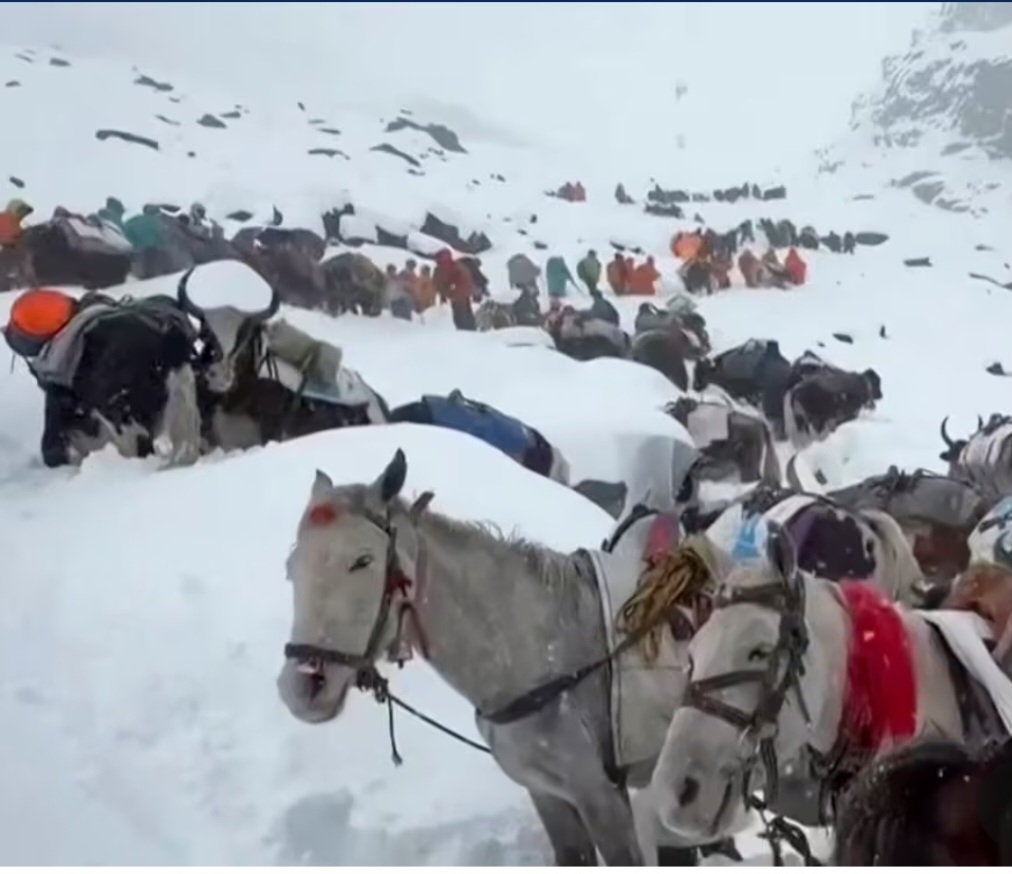
Crystal Dike
A sudden blizzard that struck the Tibetan side of Mount Everest on Saturday, October 4, has trapped hundreds of hikers and climbers, leaving at least one person dead and prompting a massive rescue operation across the world’s highest mountain.
Authorities said the snowstorm hit unexpectedly during China’s weeklong National Day “Golden Week” holiday, when hundreds of domestic tourists and trekkers were visiting the Everest region. The heavy snow and powerful winds cut off routes around the Tingri County area in Tibet, trapping nearly 1,000 people at elevations above 4,900 meters (16,000 feet).
By Monday morning, about 350 people had been rescued or had reached safety, while over 200 hikers remained stranded in subzero temperatures and deep snow. Local officials confirmed that one hiker died from a combination of hypothermia and altitude sickness.
Survivors described the conditions as “terrifying,” with snow piling high enough to collapse tents and block paths. “We had to keep digging through the night to stop the snow from burying us,” one stranded climber said in a phone interview before losing contact.
Rescue teams—including local villagers and mountain guides using yaks and oxen—have been deployed to reach those still trapped. Helicopters and ground teams are battling limited visibility and dangerous terrain to deliver supplies and evacuate survivors.
The Everest Scenic Area on the Chinese side has since been closed to visitors, and all trekking and climbing permits have been suspended pending further notice.
Officials described the blizzard as one of the most severe to hit the region in recent years, warning that fluctuating weather patterns linked to climate change have made high-altitude conditions increasingly unpredictable.
